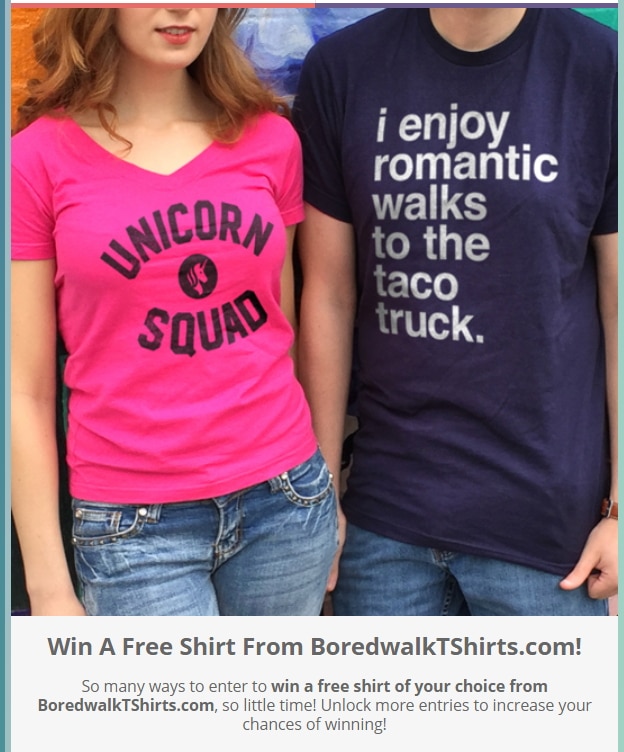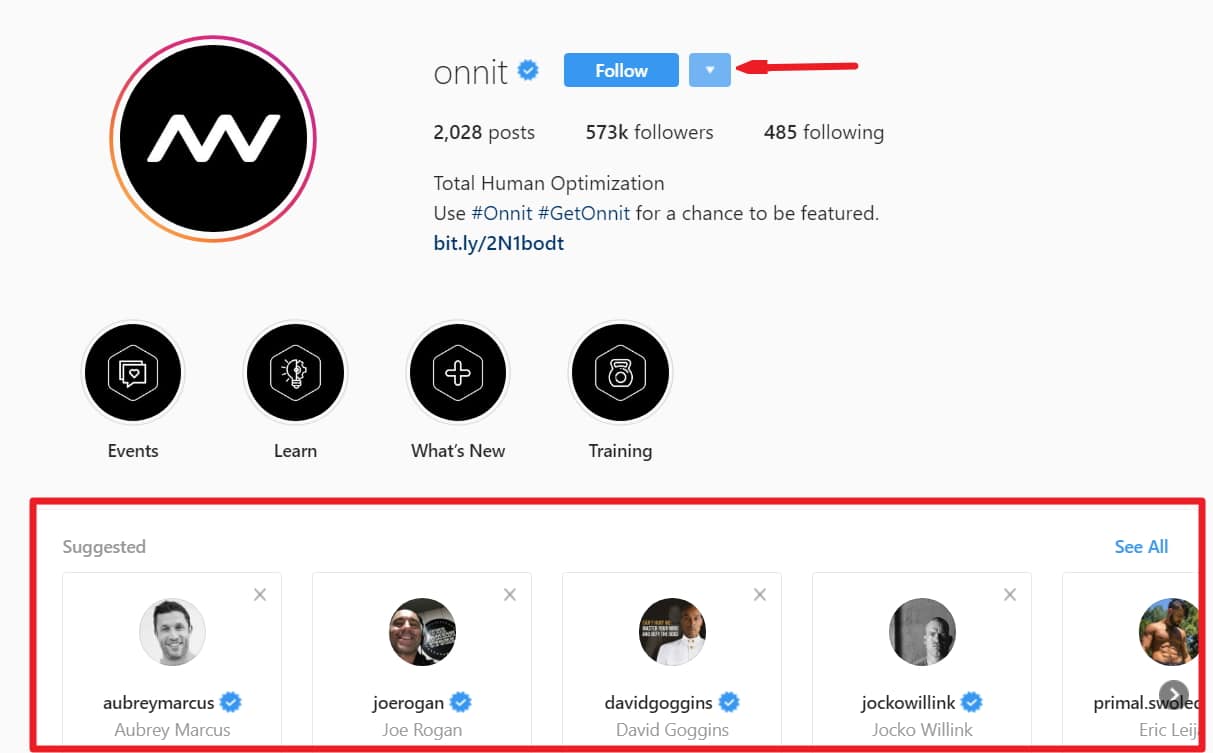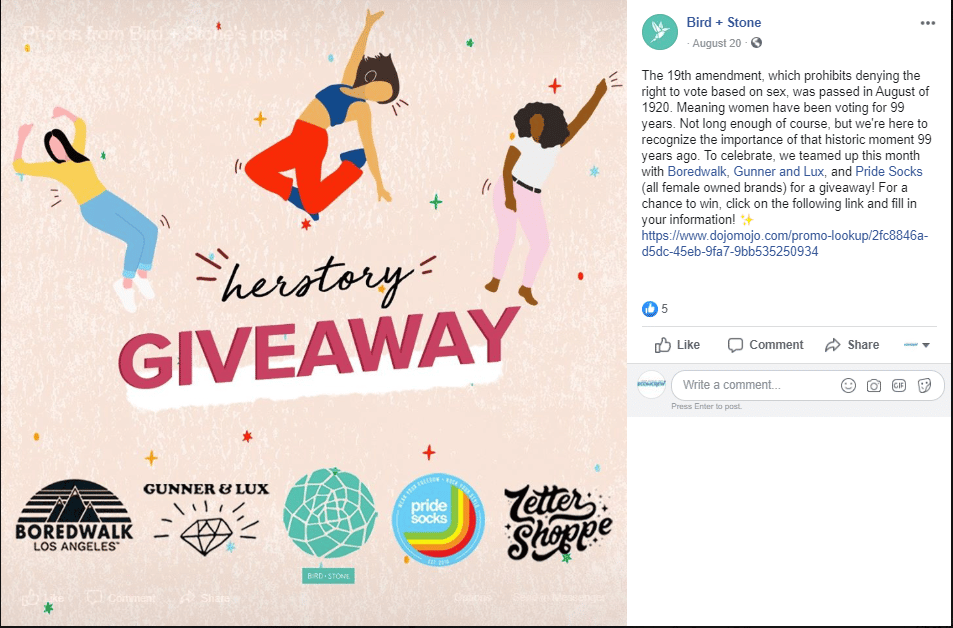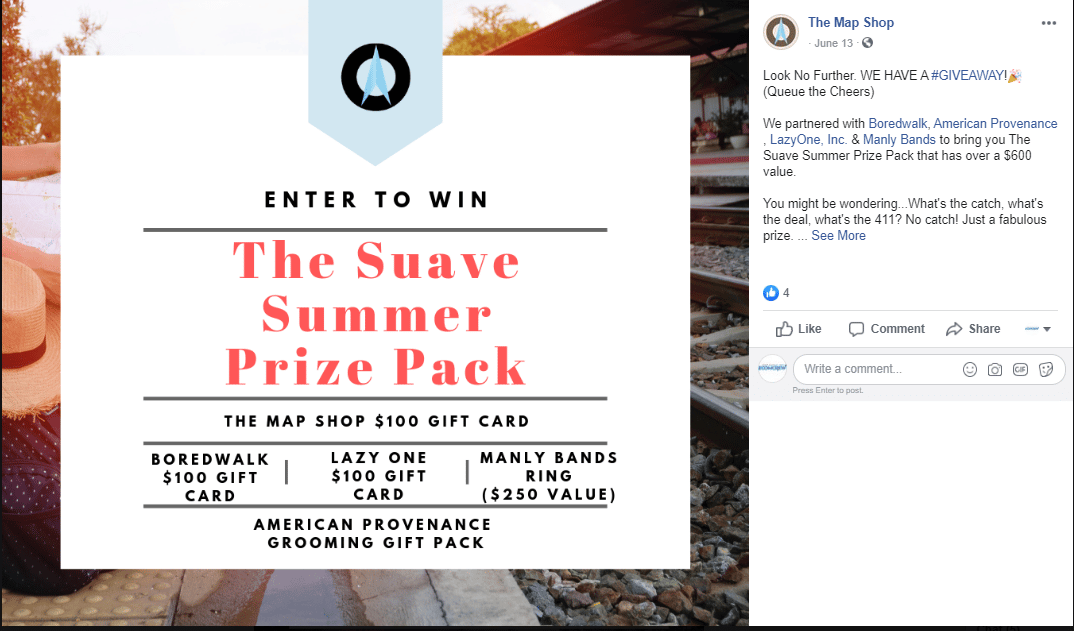Get New Customers for Free with Co-Branded Giveaways
Getting your products seen by potential customers has become increasingly challenging and expensive.
With Google and Facebook controlling so much of the audience, it can seem impossible to reach new customers without paying for ads. While paying for ads is an important part of your marketing mix, a creative marketer can find scale through partnerships for minimal cost.
My favorite way to grow my list and reach new customers is co-branded giveaways, where we give away our products to another brand's audience.
With the right partnerships, messaging, and offers you can monetize an audience for a fraction of what you pay on your other paid acquisition channels.
What is a Co-Branded Giveaway?
A co-branded giveaway is a give away your product to another brand's audience. It's a great way to grow your list and audience but also give something back to the other brand's audience.
First Things First: Who Can Benefit From This Strategy?
Co-branded giveaways are not ideal for every product type.
If you sell an extremely expensive product or a product that's not conducive to impulse purchases, it's going to be tougher to make this work for you.
For example, if you sell office furniture or wedding dresses this is probably not the best customer acquisition strategy for you. Products like that are expensive and only purchased for specific events. You won't be able to sell that kind of item just because you show it to new people.
On the other hand, if you sell something like jewelry, apparel, or cosmetics, this strategy is perfect for introducing new customers to your product line. Everyone can always use a new t-shirt or eye blush!
Getting Started: How Do I Find Partners?
The first thing I recommend doing is putting together a list of brands you'd like to work with.
To find partners I look at social media ads. I also use the “related brands” feature on Instagram. If you click the down arrow next to the “follow” button on an Instagram account, Instagram will show you other accounts that are similar. I also look at related brands suggested on Facebook when I visit the pages of brands I already know I want to work with.
Another useful tool for finding brands is gift guides. Websites like Buzzfeed, Huffington Post, etc., post gift guides for Christmas, Valentine's Day, etc. — pretty much any major gift-giving holiday. I look to see which brands were featured in those gift guides to see if there are any I might want to work with now or in the future. Help a Reporter Out can be another great source of writers in the process of doing gift guides.
Here are the criteria I use to evaluate whether I think a brand would be a great partner:
Affinity
Are their customers likely to buy my products, and are my customers likely to buy their products? I like to find brands that sell something complementary to my products that aren't direct competitors. If you sell jewelry you might want to work with a company that sells candles or skincare products. If you sell neckties you might want to work with a company that sells beard oil or men's dress shoes. Consider your customers and what other products they are inclined to purchase that aren’t already in your product mix.
Size
I try to find brands that are close to my size when I'm looking for partners. You won't know a brand's list size by looking at their website, but you can make educated guesses about their reach based on their social media following. You can also visit a brand's About page to get a sense of how long they've been around and maybe how big their team is.
Engagement
I like to make sure potential brand partners are actually actively engaged on social media. I look to see if they are posting regularly and responding to customer comments and questions. I also look to see if they are doing any paid advertising and sending regular emails via their newsletter.
How to Contact Potential Brand Partners
I keep track of brands I might want to work with using a Google Sheets spreadsheet. That way I can have team members add partner suggestions and make notes about outreach dates and communication with the brands we'd like to work with.
To streamline your outreach process I recommend creating an outreach email template that team members can send to potential brand partners. You'll also want to create a follow-up template to check back with brands that don't reply to your initial message.
I've also found that some brands are more responsive via direct message on social media vs. email, so that is another way to try reaching partners if email isn't working.
Picking a Hosting Platform
I recommend using a hosting platform for your giveaways so that you have a central place to track entries and communicate with partners.

There are a lot of platforms that provide this service, such as Gleam, Findkeep, Viral Sweep, and DojoMojo. I have been using DojoMojo mostly, but you can check out various giveaway platforms to find the one you like. Here are features I consider important:
- Ability to connect to my ESP (Klaviyo, Mailchimp, etc.)
- Ability to track entries based on the brand; this way I know which brand contributed sign-ups.
- Ability to restrict access to the sign-ups until a brand has met requirements for participation. For example, I do not grant access to sign-ups until a partner has generated a minimum of 100 sign-ups. This prevents people from doing no work to promote the giveaway and still reaping the benefits.
- Ability to get additional entries for things like following on Twitter or inviting friends to enter to win.
The primary way you should let people enter giveaways is by providing an email address and agreeing to receive communication from the participating brands.
I know some people do giveaways for Instagram followers or other such things, but I don't recommend it. Not only do giveaways like that violate terms of service, but they also provide less value to the brand owner. Social media platforms throttle impressions, so even if you get 100,000 Instagram followers as a result of a giveaway, that doesn't mean they'll all see your content. Most of them won't.
Email is better because people are more likely to see your email, and you can use email addresses for things like re-targeting ads and building lookalike audiences so that your email list is actively helping with your other paid acquisition efforts.
Launching a Giveaway
Once you've signed up partners and set up the promotion on your desired hosting platform it's time to launch your giveaway. Here are some components that help make giveaways successful:
Graphics
Design graphics that are optimally sized for the top social media platforms promoting the giveaway. This will be helpful for you and the other brands hosting the giveaway. I recommend designing graphics sized for Facebook, Instagram, Twitter, and Instagram Stories. You may want to design for other channels like Snapchat or Pinterest if you use either of them heavily, too. Make sure the images are available for all of the participating brands.
Your graphics should list the prize(s) being offered by the participating brands, and when you post the graphics you'll want to link to the giveaway entry page.
Schedule
Publish a schedule for all the brands to follow so they know what is expected and when. I provide due dates for posting about the giveaway to social media and for sending a dedicated email to each brand's email list announcing the promotion.
Although I require my brand partners to send at least one email announcing the giveaway and do at least one post on their primary social media channels, I typically do a couple of posts during the promotion and mention the giveaway in a few emails to my subscribers, even if that's not the main topic of the email. I do this because not everyone opens every email we send, and not everyone sees every social media post we publish.
Re-posting to our social media is especially important since I want to get my social media followers to join my email list. Reposting the giveaway to social media is a great way to get them to do it.
Email Flows
Have at least one welcome email set up for people when they enter to win your giveaway. This is your chance to make a great first impression, so be sure you're sending a fun, visually appealing welcome email.
You can also do an email welcome series. We send an initial welcome email when people first enter to win. We send a follow-up email a few days later that talks more about the brand ethos, and then we send a third email a few days after that with UGC in the form of customer photos featuring our products and corresponding testimonials.
Our primary goal with email is always to entertain first and sell second. If you have witty, clever copy it's much easier to win people over. We lead with content instead of a sales pitch. Our blog is full of funny and helpful articles, so we use that resource to showcase our brand personality when we introduce the brand to potential new customers.
After The Giveaway
After your giveaway is over, make sure your partners all send out the prizing as promised. We also like to announce our giveaway winner on Facebook and Instagram and let our fans know that even if they didn't win this one, there will be another opportunity soon.
The other crucial ingredient to monetizing the new email addresses is sending them a special offer. We send a limited-time discount code to the people who entered but didn't win. We then send a reminder email 24 hours before the offer expires to engender a sense of urgency.
The other important component for converting these new contacts is keeping them on your email list. They may not convert right away, but you can keep them on your email list by sending regular entertaining and engaging campaign emails.
Measuring Results
Within a month of a giveaway, I typically see about a 4X ROI on each promotion. I can get this information by pulling reports from Klaviyo. If you are a Klaviyo user, click the “metrics” tab and then look at the “placed order” metric. I filter results by campaign name so that I can see sales associated with customers from each of my giveaway campaigns.
To determine ROI I consider the cost of the item I contributed to the giveaway (typically around $25 in COGS), the cost of the software I use to host the giveaway, and the hours spent coordinating with partners.
One thing I've observed is that email addresses I collect from giveaways tend to convert long after they subscribe to my list via entering the giveaways. I regularly see conversions from email addresses I collected 6 months ago or more. That makes it a little trickier to know the long term value of a giveaway if you're just looking at results a month later. The best way to ensure long term value from these email addresses is to send out compelling campaign emails on a consistent basis so your brand stays top of mind and engaged with your content.
Most ecommerce companies send emails that focus on products and sales. By making content the focus of your campaign emails, you'll keep your subscribers opening and they'll come to you when they're in the market for your products.
Conclusion
Co-branded giveaways have been one of the most profitable marketing tactics we've done at BoredWalk Tshirts. It's a great way to get exposure for our brand but also allows the brand partner to give something back to their audience.
Do you have any questions about running your own co-branded giveaway? Let me know below.
About Meredith: Meredith Erin has been running BoredWalkTshirts along with her husband Matt for over 10 years. Together they have brought their quirky and irreverent humor to tens of thousands of people across the world.






